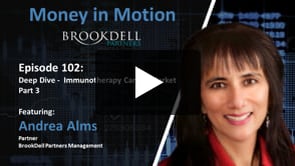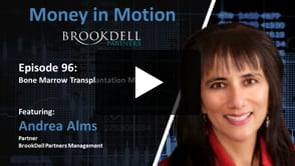Hedge Fund Dashboard:
Top Hedge Fund News, Member Posts, Hedge Fund Daily Indices and more!
Jeffrey Talpins sits on the top floor of Element Capital Management’s Midtown Manhattan headquarters. From that vantage, the founder and chief investment officer directs a more than $18 billion trading operation that has quietly become the largest and most profitable of its kind. Talpins sees every trade in the building, whether his own or another portfolio manager’s, and has the final say on business decisions.
One floor down sits another group of traders – the so-called “pods” that began investing a portion of Element’s money five years ago. The pods invest independently of Talpins, managing separate portfolios of bonds, commodities, currencies and stocks. They sometimes share trading execution with the founder, along with certain internal resources, but cannot see any of Talpins’ positions.
The division was meant to promote intellectual independence among the pod traders, who would help generate new investment ideas. Element leadership expected the traders would eventually manage a larger portion of the firm’s rapidly growing pool of money.
Instead, they have grown at a slower pace than the rest of the firm, people familiar with the matter say. Some traders have complained they have little access to Talpins, a mercurial math genius viewed by peers as the top macroeconomic trader of his generation. Talpins, said to be a hardworking and demanding leader, oversees a separate 20-person investment group that helps him generate and execute trade ideas.
Element’s growth has thrown these divisions into sharp relief – Talpins’ group manages more money than ever, allocating only about 10% of Element’s capital to the pod traders. To be sure, few traders can match Talpins’ track record. Element has averaged annual returns of more than 20% while never experiencing a down year. The fund gained 35% during the global financial crisis of 2008. The year after, it returned almost 80%.
Element’s performance recalls the earliest days of the hedge fund industry, when traders like George Soros and Stan Druckenmiller made billions betting big on macroeconomic policies. On the contrary, investors say Talpins’ edge lies in his ability to structure trades using options and other financial derivatives, drawing on his background as head of fixed income options trading at Citigroup. Those skills have earned Talpins hundreds of millions of dollars in profits and made him the envy of fellow macro managers.
Over time, though, some clients have raised concerns about Element’s transparency, according to investors and people familiar with the firm’s operations, who declined to be named discussing sensitive matters. The complexity of Element’s portfolio has made it difficult to understand the full extent of the fund’s trades, the investors say.
Based on probabilities, Element says it expects losing periods of 4% every year and 15% every 10 years. While the first scenario happens roughly annually, the second has never come to pass. Element has said a 15% loss would represent an out-of-the-ordinary event, while 4% losses are to be expected.
Element, which counts fewer than 50 clients, still has more investor demand than it can accept. Adam Blitz, whose Evanston Capital Management is an Element client, disagrees with concerns about the firm’s transparency, saying its disclosures compare favourably to peers. “When someone is doing well and no one really knows why,” he says, “it’s very easy to kind of fall back on those generic criticisms.”
Talpins declined to be interviewed for this article.
Consistent returns
A former Element employee and investor calls Talpins one of the best “positive expected value” traders he has ever worked beside. Another investor, asked to explain Element’s performance, says Talpins must be able to predict the future.
Element’s explanations have left some frustrated with what they view as a lack of disclosure, investors say. Element is happy to discuss the results of various investment strategies, they say, but less forthcoming about how they structure and execute those trades. “They’re doing much more than they say they’re doing,” says one investor.
Talpins’ trades may originate from broad macroeconomic views. But his trade structuring makes ample use of options, swaps and other over-the-counter derivatives, adding layers of complex and offsetting positions. Because some of the instruments do not pass through central exchanges and Element trades with a large number of counterparties, it can be difficult to determine how Element is positioned at any one time. Element invests in dozens of strategies, and the firm keeps more than half of its portfolio in cash, helping cushion against sudden reversals in derivatives holdings.
In one high-profile instance, Element’s trades raised eyebrows after a Wall Street Journal article revealed the fund was the largest bidder during a series of Treasury auctions in 2015. The buying was part of a so-called “bond auction strategy” where Element profited from small supply-demand imbalances in Treasury markets.
Others say Talpins has predicted macroeconomic changes early and often. In 2013, as the Federal Reserve held tight to low interest rates implemented after the financial crisis, Element profited from a sudden upward move in interest rates that caught other macro hedge funds off guard.
This year, a bet on President Donald Trump’s tax reforms has paid off. Talpins predicted months in advance that Republicans would pass sweeping tax cuts last November. Thinking the cuts would lift American companies and U.S. Treasury yields, he piled into stocks and options trades that would profit from falling bond prices. The trades have contributed to returns of about 27% through October.
Talpins still sees room to run in the U.S., people familiar with his thinking say. He has held on to bets that interest rates will rise quicker than the market expects. In the long run, however, Talpins has said fiscal stimulus combined with an economic slowdown could leave the Federal Reserve with less room to raise rates.
Last month, Talpins saw the sell-off in stocks as an opportunity to buy, one person familiar with his thought process says. Thinking Trump and Chinese president Xi Jinping would reach a détente on trade at the Group of 20 Summit, Talpins predicted stocks would rally through the end of the year and bought call options that would pay off from broad stock gains, the person says.
It’s the kind of savvy bet that has paid off for Talpins in the past. Element has at times benefited from low implied volatility in certain derivatives markets, which has provided the fund ample opportunities to buy cheap options. And when Element gets those trades right, they have the potential to pay off more than plain buy-and-hold strategies.
But Element’s complexity has also raised concerns about its footprint in derivatives markets, investors say. Element’s portfolio carried a gross notional exposure of $1 trillion at the end of last year, a measure that accounts for the implied value of interest rate options and swaptions holdings. The number could attract the attention of regulators scarred by the collapse of Long Term Capital Management, which also had a gross notional exposure greater than $1 trillion.
Element has said the $1 trillion figure does not accurately represent the material risk of its investments. The number does not account for the sensitivity of options to underlying assets, what is known as “delta,” and some of the positions effectively cancel each other, reducing the risk of the total portfolio. Element also uses a lower amount of borrowed money than LTCM, and the so-called relative value trades that sank the firm comprise a smaller portion of Element’s portfolio.
Yet Element’s exposure could subject the fund to “universal margin requirements” that mandate hedge funds and other non-bank entities commit greater amounts of cash to uncleared derivatives trades, which do not pass through central exchanges. Brevan Howard Asset Management became the first hedge fund subject to the margin requirements this year after the rules were extended to managers with more than $1.5 trillion in uncleared derivatives.
Next year, hedge funds with exposures greater than $750 billion will be forced to comply, potentially affecting Element. The rules would add to restrictions placed on uncleared derivatives trades since the crisis, as regulators have attempted to steer a greater amount of trades through exchanges.
“Such requirements may make it more difficult and costly for the Element Funds to enter into highly tailored or customized transactions,” Element writes in filings with the Securities and Exchange Commission. “They may also render certain strategies in which the Element Funds might otherwise engage impossible or so costly that they will no longer be economical to implement.”
Macro giants
Element’s investment approach has roots in Talpins’ undergraduate years at Yale University. A major in Economics and Applied Mathematics, Talpins studied under the options theorist Jonathan Ingersoll, Yale endowment manager David Swensen and the Nobel Laureate economist Robert Shiller, for whom he also worked as a research assistant. Talpins’ senior thesis focused on inflation-linked mortgage-backed securities.
After his graduation in 1997, Talpins went to work at Goldman Sachs, where he structured collateralized mortgage obligations and traded MBS options. Later at Citigroup, Talpins led an expansion of the bank’s fixed income options desk, including a market-making division for mortgage options and a macro volatility group trading the bank’s own capital, according to a biography from the Irish Stock Exchange.
Element began in 2005 with a $250 million seed investment from Vega Asset Management, a Madrid-based hedge fund run by the eccentric trader Ravi Mehra. Matthew Goldman, a Citigroup colleague who traded options portfolios alongside Talpins, joined as a founding member.
Vega was at its peak when it began the seeding business, ranking as Europe’s largest hedge fund. In exchange for up to half of a trader’s profits, Vega provided office space, lawyers, technology and all the trappings of a mature hedge fund operation. Element became one of the largest hedge funds seeded by Vega, and its strategy of trading interest rates volatility immediately made money.
But Vega ran into trouble soon after Element’s opening, suffering a losing streak in a group of macro funds. In 2006, Vega sold a majority stake in the VegaPlus seeding unit to the Spanish bank BBVA, which renamed it Proxima Alfa. Element withdrew from the platform soon after. “The fund’s managers didn’t believe a Spanish bank could add value to their operation,” Dídac Artés, Proxima Alfa’s chief executive, said in a 2007 interview.
Having returned Proxima Alfa’s backing, the newly independent Element managed just $125 million, a fraction of the pre-crisis macro giants, such as Paul Tudor Jones’ $20 billion Tudor Investment Corp. Caxton Associates, Soros Fund Management, Druckenmiller’s Duquesne Capital Management and Louis Bacon’s Moore Capital Management each oversaw more than $10 billion.
Now, Element manages about as much investor capital as all of them combined. Caxton, Moore and Tudor have struggled to match their pre-crisis returns, blaming easy money central bank policies for distorting global markets. Privately, some of Element’s peers have said they need to become more like Talpins’ firm to survive in the new macro environment.
Their decline has coincided with Element’s rising popularity. The firm has repeatedly turned away investors, wary of growing too large. When Element opened to new capital earlier this year, it took in about $3 billion in the span of a month, mostly from existing clients. Last year, it accepted $2 billion after opening for just two weeks.
Investors that committed money to Element in 2005 would now be sitting on more than 10 times their original amount. The median macro hedge fund in the Absolute Return database would have grown by a factor of about 2.6, by comparison.
Several of the U.S.’s largest public investors have put money with Element, including the Teachers Retirement System of Texas and the Alaska Permanent Fund. But a significant portion of Element’s capital also comes from funds of funds, which can be quicker to pull money during periods of turbulence.
Some of those funds have bumped against the firm’s rules governing investor concentration, which limit individual clients to 10% of the total, one investor says. Blackstone Alternative Asset Management, GCM Grosvenor, Morgan Stanley and UBS each invest in Element through publicly-registered funds, alongside their private vehicles.
In recent fundraising rounds, Element has instead courted college endowments and private foundations with similar long-term financial horizons. The Harvard Management Company invested last year, months after the endowment manager said it would shed its own internal hedge fund teams. The John D. and Catherine T. MacArthur Foundation, which endows the so-called “Genius Grants,” has also invested in Element.
Growing pains
Element’s success may prove to be its biggest challenge. The firm has tripled its assets in a bit more than three years, a rate of growth that would cause concern for some hedge fund investors. Element has no plans to return money from the fund, a person familiar with the matter says.
“Part of the secret sauce…is their trade structuring. There probably is a point where you become too big to execute those sorts of interesting trades,” Blitz says, adding that Element’s growth has been “thoughtful and measured.”
A lawsuit from a former Element executive recently shed a harsh light on Talpins’ management of the growing firm. In her complaint before the New York State Supreme Court, Deborah Stine said Talpins hired her to oversee finances for both Element and his personal fortune. But Stine soon found herself performing tasks commonly expected of assistants, the complaint alleged, part of a pattern of discrimination resulting in unequal pay.
“Talpins insisted that Stine complete menial tasks such as drafting thank-you notes for him, choosing hostess gifts to be sent from him, finding a way to move him to the top of the parking lot waiting list at Metro-North, reconciling his decorating bills, managing his various traffic violations, and arguing with a wine store about the price of a bottle of wine he received as a gift,” the complaint alleged.
When Stine joined Element in 2015, the only four other women at the firm were all employed as administrative assistants, according to the complaint. Two years later, Element employed just six other women, including four in administrative assistant roles, the complaint said.
Element called Stine’s allegations “meritless” in court filings. A judge ruled in September that Stine would have to settle her claim in private arbitration due to a clause in her employment contract.
As Element has grown larger, so has the importance of Talpins. Just three other employees own stakes in the firm: interest rates specialist Dan Pergola, chief operating officer Adam Prestandrea and chief risk officer Jason Stipanov. Goldman left the firm in 2010.
Element hoped the pod system would help Talpins share some of the burden and diversify the fund. The setup shares similarities with other multi-manager hedge funds, such as Steve Cohen’s Point72 Asset Management, which have gained in popularity since the financial crisis. The operations promise consistent returns by spreading money across teams of portfolio managers overseen by a central risk management program.
But Talpins’ share of the portfolio has only grown since Element introduced the pod system. Talpins’ core investment team now manages 90% of Element’s money, dwarfing the impact of the 10 independent portfolio managers based in London and New York. Few other firms employing pod systems have so much risk concentrated in one top money manager, investors say.
The changes have been expensive for some clients. Beginning in 2014, Element has subjected new investments to management fees of 2.5% and performance fees of 25%, compared to the fund’s previous standard 2% and 20%. The move is a rare example of hedge funds raising fees, which have come under pressure since the financial crisis.
Element has also introduced a mandatory expense charge to pay bonuses for traders, which is capped at 50 basis points. The pod traders have contributed up to a few percentage points of Element’s returns this year, investors say. Element has so far used only a fraction of the expense charge.
No distractions
Talpins keeps a lower profile than his more outspoken peers, preferring to avoid conferences and public speaking engagements. He has, however, become involved in hedge fund philanthropy circles, serving on the board of the Harlem Children’s Zone chaired by Druckenmiller. With his wife, Mara, he has donated money to Tudor Jones’ Robin Hood Foundation and the hedge fund-centric Success Academy charter schools.
The Talpins’ charitable foundation has grown in kind, swelling from $33 million in 2014 to more than $170 million in 2016. Jeffrey Talpins alone contributed more than $85 million in 2016, the most recent year for which filings were available. The filings capture only a slice of Talpins’ net worth, much of which is tied up in Element.
Talpins has tasked Prestandrea and former RBC interest rates trader Peter Hirsch with work related to his growing fortune, according to Stine’s lawsuit and people familiar with the matter. People close to Talpins, 43, say he remains focused on managing the fund. “I never got a sense that Jeff is ever distracted on anything, ever,” a former Element employee says. “He’s a dialed in guy.
“People have asked me whether they should pull money out of the fund because he’s running $1 billion, $2 billion, $10 billion,” the former employee says. “I generally wouldn’t bet against Jeff Talpins’ ability to make money.”
Decoding Element on Absolute Return.
Today's Hedge Fund Headlines:
Access Over 250K+ Industry Headlines, Posts and Updates
Join AlphaMaven
The Premier Alternative Investment
Research and Due Diligence Platform for Investors
Free Membership for Qualified Investors and Industry Participants
- Easily Customize Content to Match Your Investment Preferences
- Breaking News 24/7/365
- Daily Newsletter & Indices
- Alternative Investment Listings & LeaderBoards
- Industry Research, Due Diligence, Videos, Webinars, Events, Press Releases, Market Commentary, Newsletters, Fact Sheets, Presentations, Investment Mandates, Video PitchBooks & More!
- Company Directory
- Contact Directory
- Member Posts & Publications
- Alpha University Video Series to Expand Investor Knowledge
- AUM Accelerator Program (designed for investment managers)
- Over 450K+ Industry Headlines, Posts and Updates






